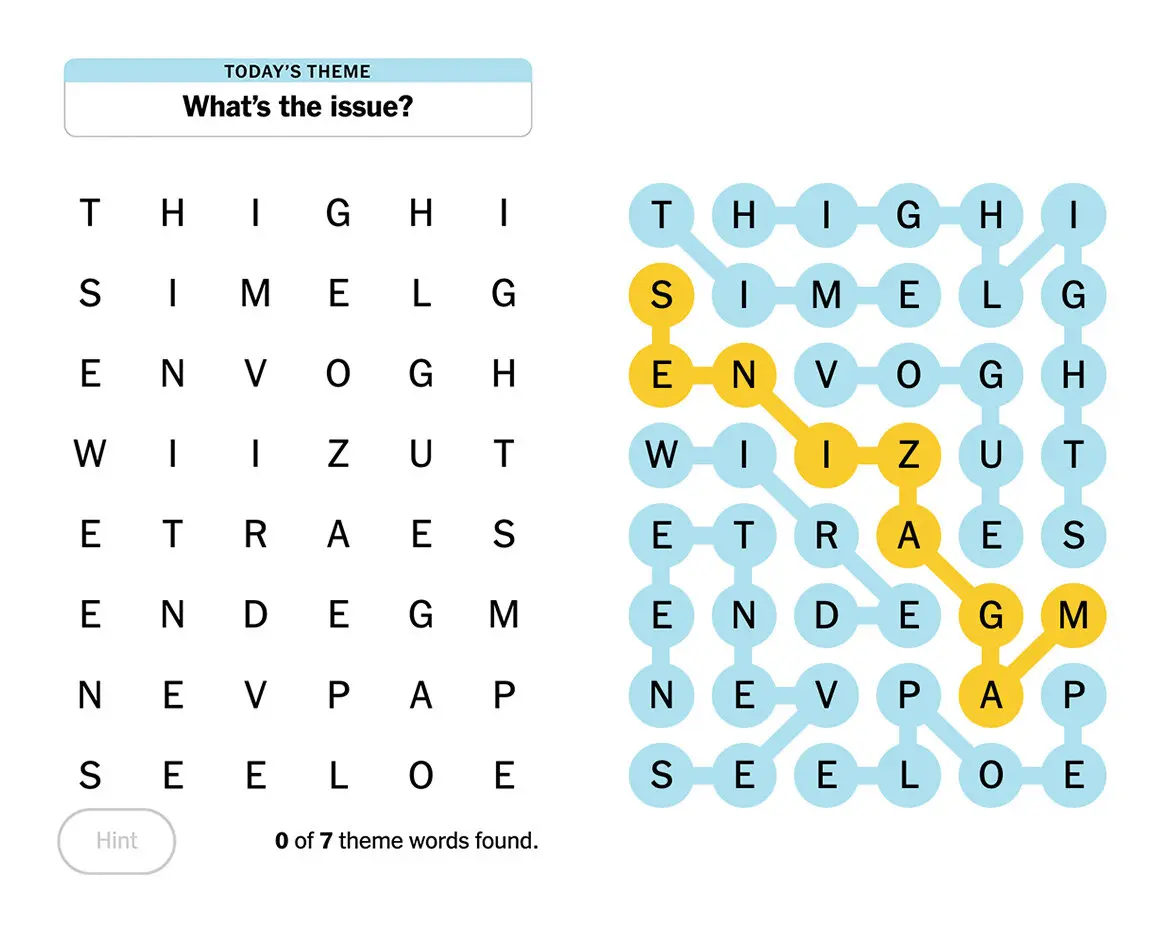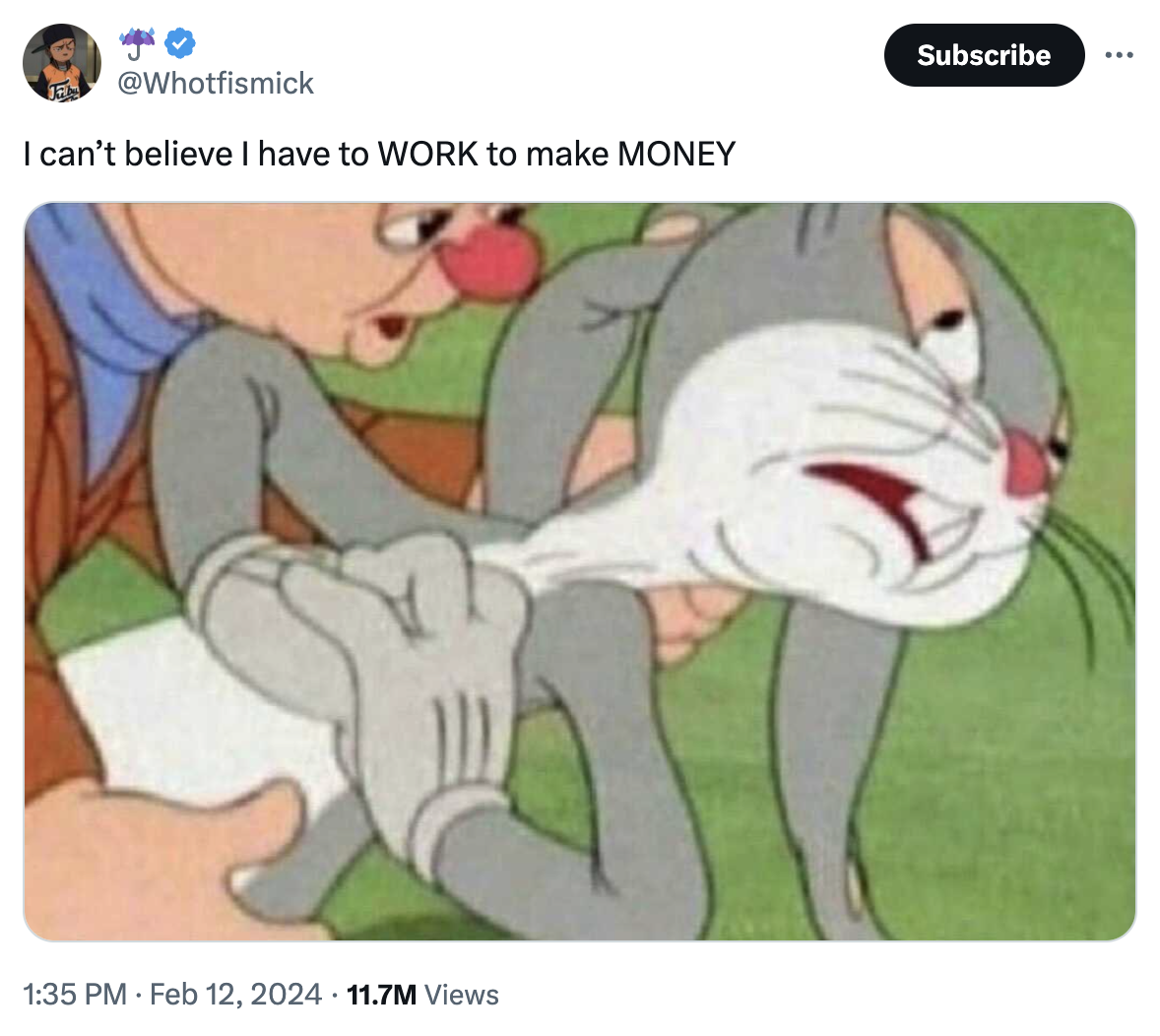Issue 87: Proven / improved / new
I’m doing a reading as part of my Emerging Writer Fellowship at The Center for Fiction on May 23! If you’re in New York, I’d love to see you there.
I started a new job last November and one of the teams I work on is responsible for prototyping new games (psst check out our latest beta game, Strands!). Game design is completely new to me. A few of my colleagues come from the gaming industry, so it’s been fun to learn about design principles, game mechanics, and testing. One thing my product manager shared with me is how she thinks about the ideal breakdown of a game, a different “rule of thirds”: ⅓ is proven, ⅓ is improved, and ⅓ is new.
In my cursory research, this is a concept from Mark Pincus, founder of Zynga, that was one of the guiding principles of the company. As Pincus taught his business school students, “To create hit games, you often must start with proven elements that are working in the industry. You then add features that are better, ideally substantially so, and then sprinkle in more new things to make the game feel fresh and innovative.”
“Proven” means that an element of the game is a known success, like the popularity of farm life sims, whether that’s Stardew Valley or Animal Crossing. “Improved” means focusing on making an aspect better, for example, emoting in Fortnite includes popular dances and more pop culture relevance. A “new” capability is something unique to your idea and therefore differentiates it, like all the macabre things you can do in the Sims and its made-up language, Simlish.

In the case of Strands, this is how we thought about “putting a new twist on a classic puzzle”:
- ⅓ proved: word searches are a popular type of puzzle
- ⅓ improved: editors bring a human touch to puzzle creation, a daily theme guides gameplay (but non-theme words earn you hints), and words can be created by connecting/dragging letters in any direction
- ⅓ new: each puzzle has a “spangram” that describes what the theme words have in common and must touch two sides of the game board, the theme words and spangram fit the grid perfectly without overlap
The same framework can be applied to writing. A good story or a memorable character will have some mixture of all of these elements. But it’s up to the individual writer to decide where they’ll be more conventional vs. experimental. Is it sentence-level language? Structure? Dialogue?
Rather than breaking down proven / improved / new elements into exact thirds, different genres might lend themselves to different ratios. In genre fiction, a larger proportion of the book will be proven or improved. Just think about all the tropes people love in romance—enemies to lovers, there’s only one bed, grumpy/sunshine (okay, I admit, these are all just my favorite tropes). Romancing Mister Bridgerton, the basis for the upcoming season of Bridgerton, is a friends to lovers storyline with the added twist of Regency Gossip Girl. Genre is all about adhering to certain expectations, but making those interesting or subverting them.
Meanwhile, literary fiction (which admittedly doesn’t have as clear a definition) might lean more heavily on “new” elements, like specific approaches towards style and prose. This might mean more experimental novels. No One Is Talking About This has an unnamed protagonist and is largely written as a stream of consciousness meant to mimic Twitter. Erasure does this through structure by including ~100 pages of the protagonist’s fictional book. “New” might also translate into genre blending, like Never Let Me Go, which combines aspects of romance, contemporary, and science fiction.
This framework has taught me that creativity doesn’t always mean equating newness with greatness. Pincus says, “You can make a new product with no or few ‘new’ ideas in it and it can still be great.” There is a lot of opportunity and work to be done in improvements. Moreover, “newness” itself can mean many things. It doesn’t have to be big swings, but could be small, meaningful changes.
All three areas also act in concert together and reflect a writer’s intentions and interests. In writing, there are obviously many well-trodden subjects, structures, archetypes, and themes. But the originality and richness of a story comes from the combination and execution of ideas.
What does your ratio look like for what you’re writing? What’s proven / improved / new?


Creative resources
- I’ve been working through some edits on a short story and found Eva Parish’s blog post on editing techniques very helpful.
- Applications are open for Abode Press’s first ever virtual retreat until April 30, with workshops in fiction, poetry, and nonfiction. More program and application information can be found here.
- Dirt and Literary Hub are joint-publishing a new series on The Middle Class Writer, which talks frankly about the role of money in the life of a writer in 2024. I’ve particularly enjoyed essays on the conspicuous absence of money from novels, writing as labor, and the precarity of the writing life.
- Annie Duke’s tips on how to quit, and how to decide whether to “grit or quit”
- “Truth Is the Arrow, Mercy Is the Bow: How to Write the Unbearable Story” by Steve Almond
Recent reads & other media
I’m reading a few books for The Center for Fiction First Novel Prize and just finished Oye by Melissa Mogollon, a humorous and heart-wrenching coming-of-age novel about a Colombian American teenager and her family’s secrets. I listened to two memoirs on audiobook: I'm Telling the Truth, But I'm Lying by Bassey Ikpi and I’m Glad My Mom Died by Jennette McCurdy. Both write about mental illness and fractured relationships in different ways—Ikpi with more experimentation in structure across her essays to illustrate her experience of bipolar II, and McCurdy’s first person, almost diaristic recounting of her development and recovery from eating disorders and substance abuse.
Some friends and I watched Perfect Days, a gorgeous examination of the sadness and joyfulness of solitude through a Tokyo toilet cleaner. E and I loved Problemista, a surreal fairy tale about the limbo of immigration and demanding to be seen. We also watched Red Eye, a fun early 2000s thriller starring Cillian Murphy and Rachel McAdams. My sister and I caught the theatrical re-release of Shrek 2, in honor of its 20th (!!) anniversary and honestly 5/5 no notes.
The new season of Abbott Elementary is great and this profile of Quinta Brunson was a fun peek behind the sitcom’s influences and development. I also discovered Resident Alien on Netflix, a SyFy show about an alien who crash lands in a small Colorado town and has to fit in with humans in order to carry out his mission. It’s a great fish-out-of-water story and Alan Tudyk’s comedic timing makes me laugh out loud.
It’s been almost a month of Cowboy Carter and I’ve obviously been listening to it on repeat!!
Recently read short stories: “Pre-Existing Conditions” by Jose Diego Medina, “Scarlett” by Everdeen Mason, “What He Told Them” by C. Adán Cabrera, “Kalki on the Prowl” by Swati Sudarsan
Note: Book links are connected to my Bookshop affiliate page. If you purchase a book from there, you'll be supporting my work and local independent bookstores!
~ meme myself and i ~
Two bad bitches. Proposal to sunset corporate 1:1s. Don’t watch movies you relate too much to. Dogs doing double dutch! What I’m doing this weekend. Every cafe table ever.

